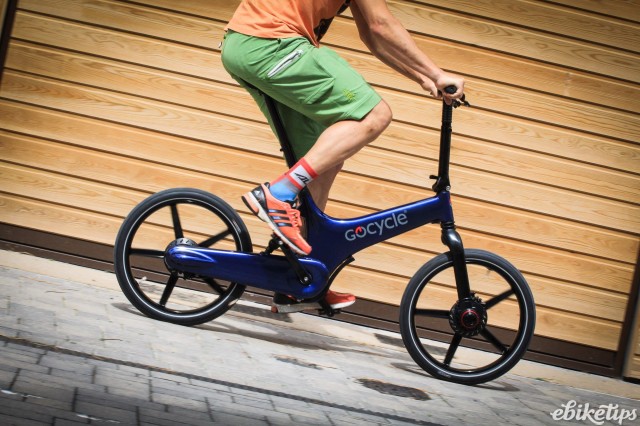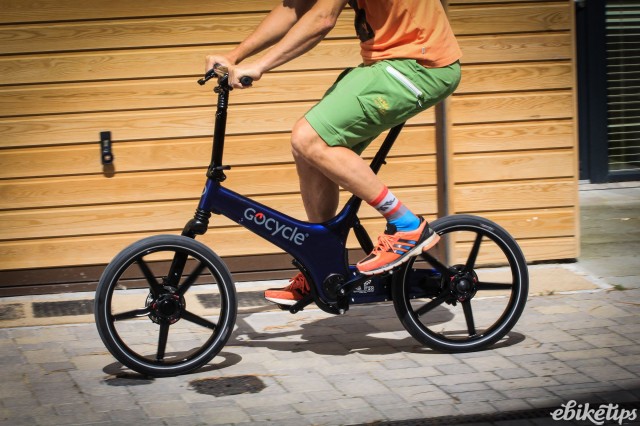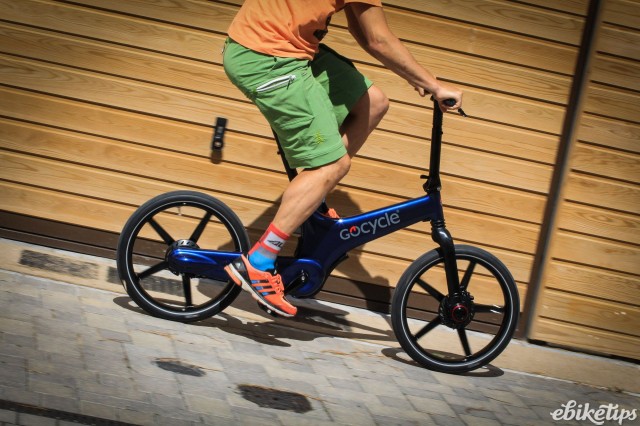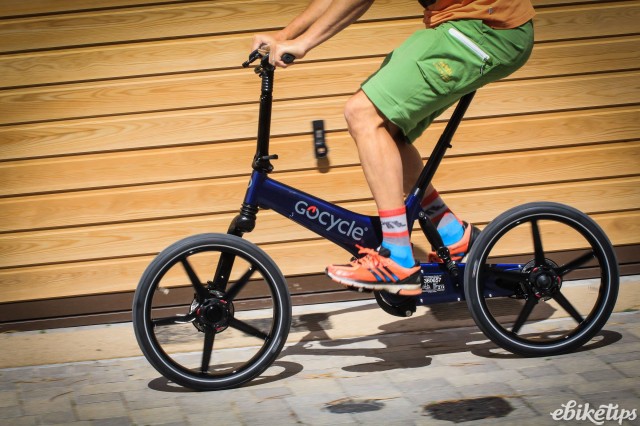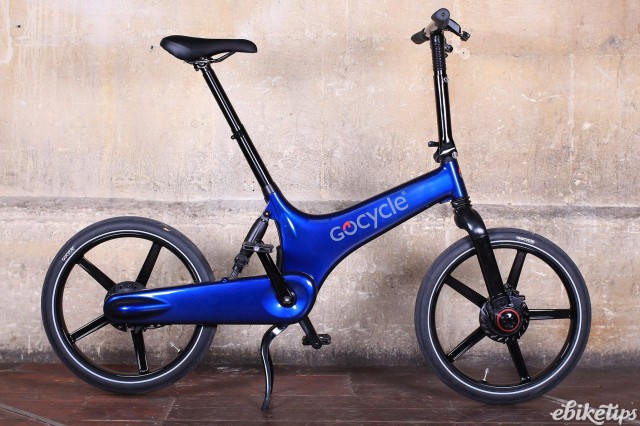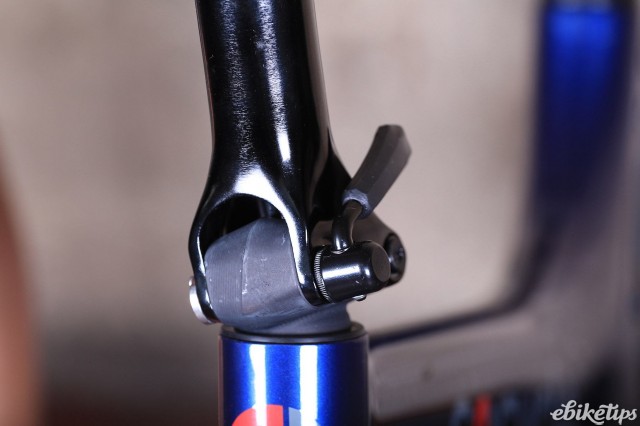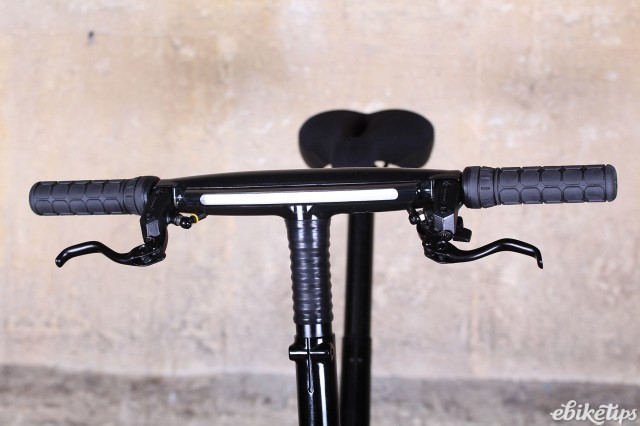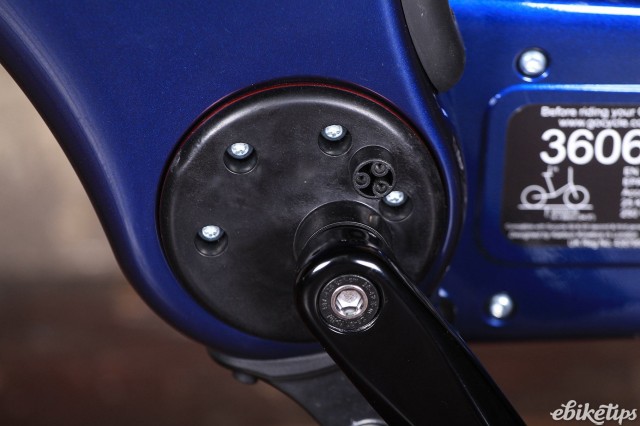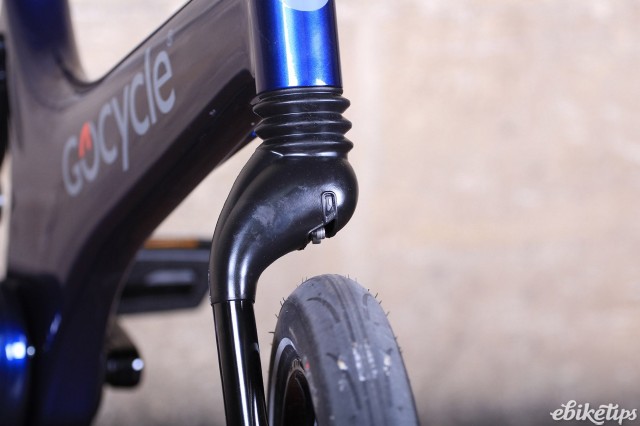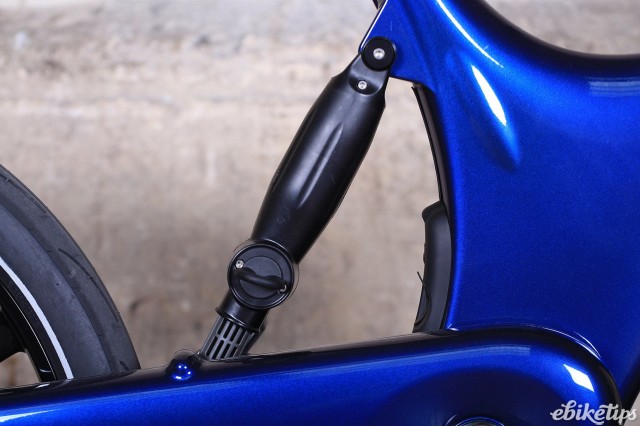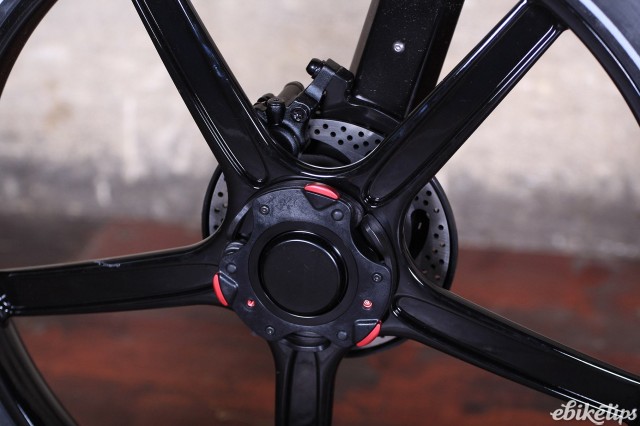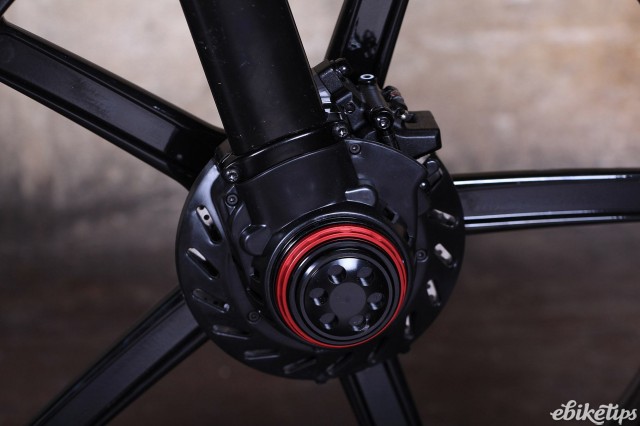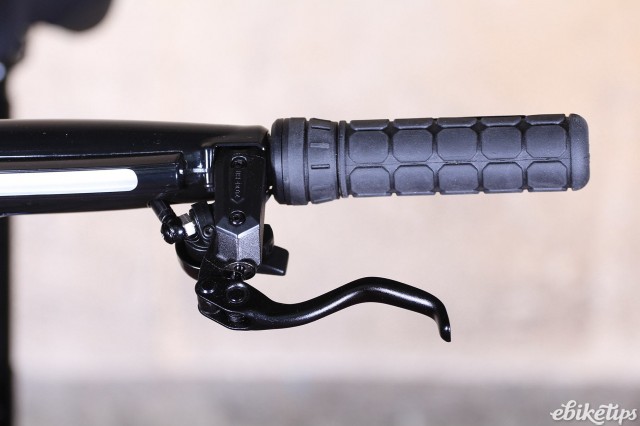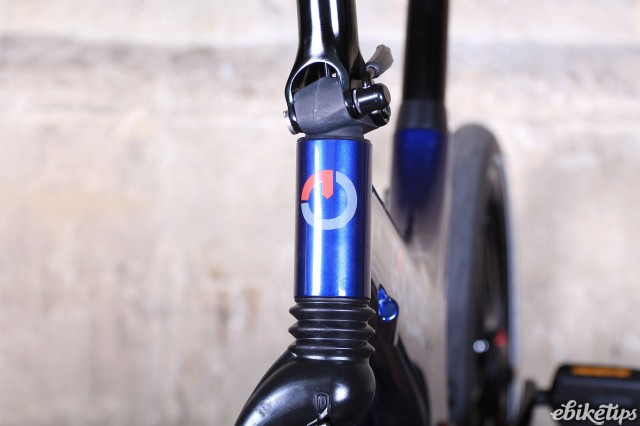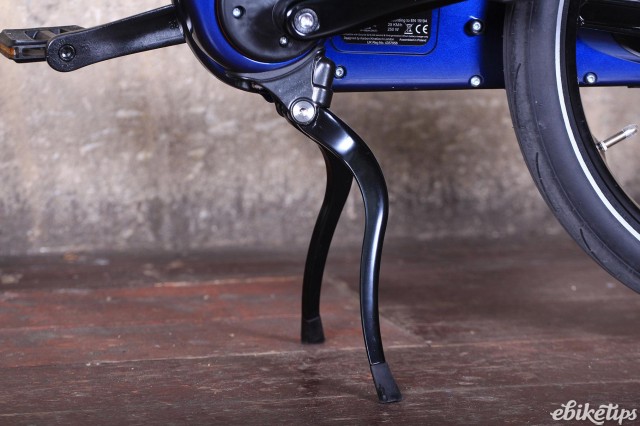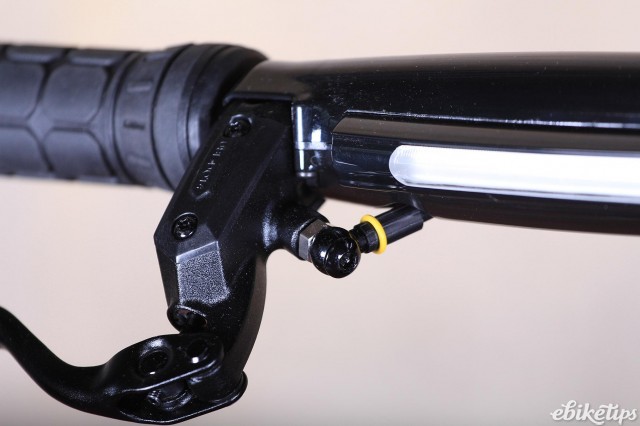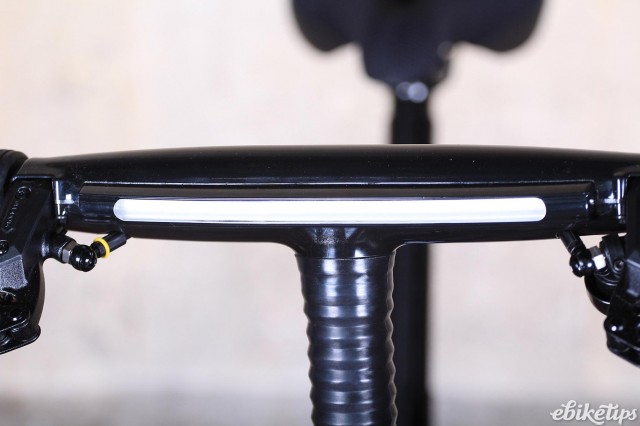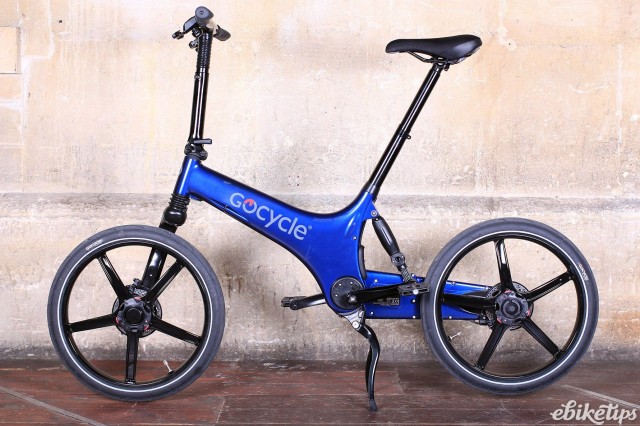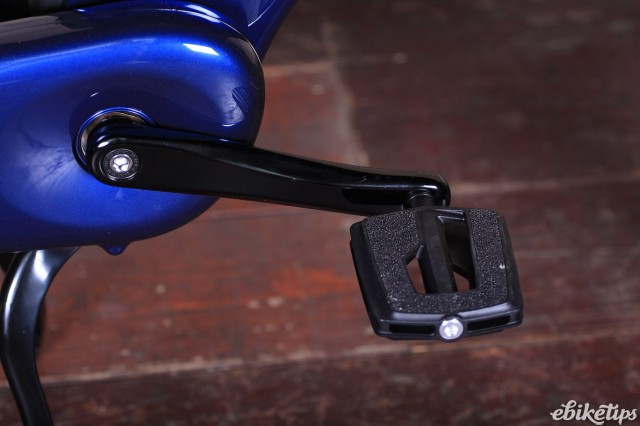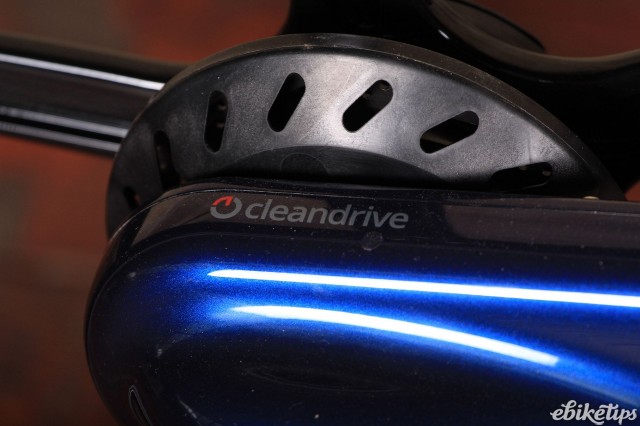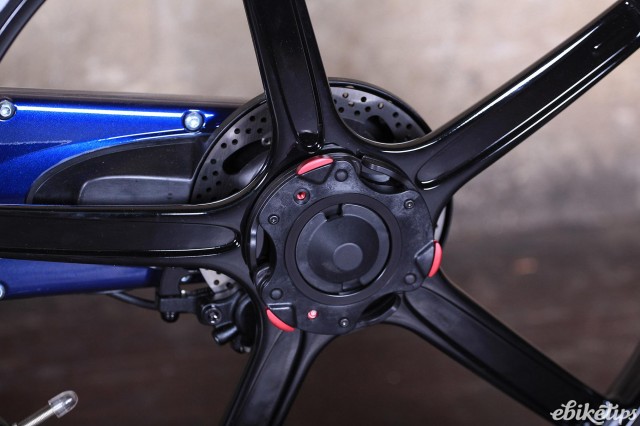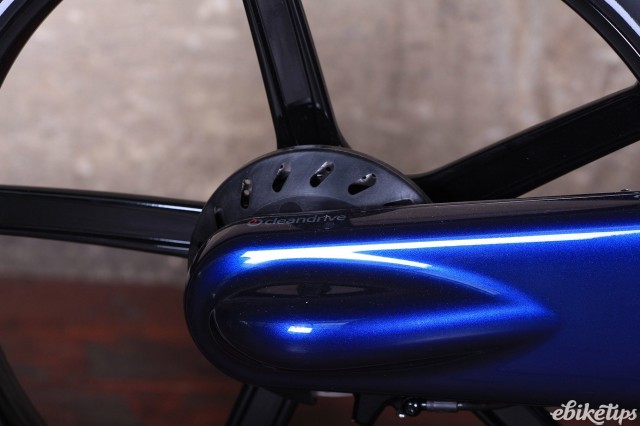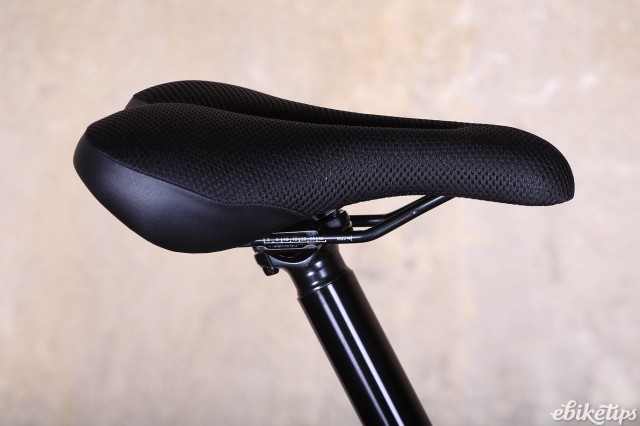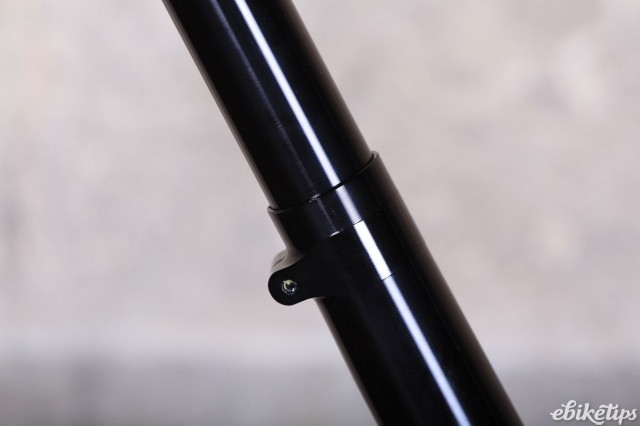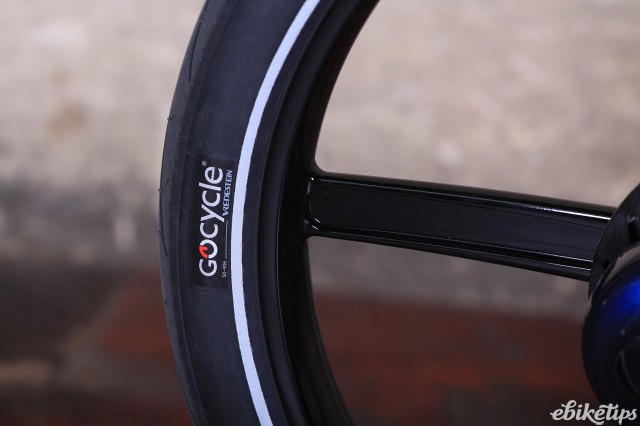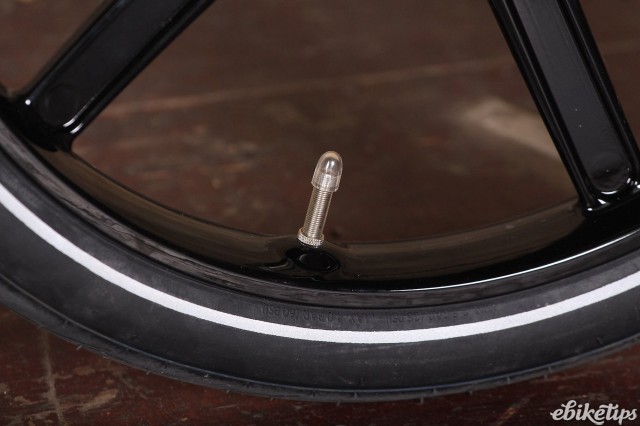Gocycle G3
Overview
- Great design
- Light and easy to pack down
- Clean running
- Display is poor
- Expensive
- Range is average
The Gocycle G3 is a striking £3,299 city bike with a low overall weight and some very interesting tech. If you have a certain set of needs (and plenty of cash) it could be the one bike that's just right. There's plenty to like about it, including the sleek design, configurable assistance, fully enclosed transmission and demountable and packable design. For most people there's a city bike out there that'll do the job as well for a lot less, but if you're sold on the look or it fits your lifestyle perfectly then you're getting a good e-bike with a unique look.
Weight first. Gocycle claim a weight of 16.3kg for the G3. Ours was a bit heavier than that, at 16.9kg, but even so this is a very light e-bike, a good 5kg lighter than the Orbea Katu-E and Kalkhoff Sahel we've had in recently, which are both 20"-wheelers too.
The weight saving comes in part from the use of injection-moulded magnesium alloy for the frame and wheels to keep the weight of those bits as low as possible. The compact 250W hub motor doesn't look like it weighs much either. The battery isn't huge, at 300Wh, so you won't get a massive range out of the G3 – Gocycle suggest a maximum of 80km, but this is a city bike designed for short hops, not a grand tour.
Integration is a key theme here. The battery is integrated into the frame, as are all the cables, and the drivetrain is completely enclosed which gives very low maintenance and clean running, meaning you're going to be a lot less reticent about bringing it indoors. There's a daylight running light in the front of the handlebars, and an LED display at the back which gives you information about what the bike's up to.
The bike is controlled and configured via a smartphone app. You can set the assistance mode – there are three standard modes and one custom – and you can configure the power curve, maximum assistance speed and throttle function for each. You can set the motor to work up to 40km/h so it's possible to set up the bike so it's technically illegal on UK roads. You get a warning if you do that. Not that we'd know, obviously...
Gearing-wise the Gocycle uses a three-speed hub gear, with predictive electronic shifting. The bike will shift up and down for you depending on your speed (it works best if you back off when you want to shift), and you can also select the gear you want via a rotary control on the handlebars. There are two of them: the other one controls the daylight running light and also acts as a twist-and-go throttle, if you've enabled that function.
The Gocycle G3 isn't a folding bike, but it is demountable and fits into a carrying case with a docking station that's very compact indeed. The wheels attach at one side to the monoblade fork and rear swingarm with three locking levers and it's a ten-second job to remove a wheel; they're identical too, as the gearing and brakes remain in place when you remove them. The seatpost is removeable, the bars fold down and by releasing the rear shock you can swing the drivetrain round making the bike into a package that'll easily fit into a pretty small space; it's ideal to stow away on a motorhome, for example.
The G3 is a one-size-fits-all design, with a slackened seatpost angle. Raising the seatpost provides a greater reach to the handlebars for taller riders. There's hydraulic disc brakes front and rear for stopping you in a hurry, and a double kickstand for when you're at a standstill.
Dave says: The look of the Gocycle is unique and stylish, with clean lines and a very modern aspect. In terms of the frame design the one-size-fits-all works fairly well here. The seatpost is angled further away from vertical to give you more reach if you're taller and that's pretty effective; it does place your weight further over the back of the bike which can lead to the front hub motor scrabbling a bit on steeper stuff, but it's a minor issue and you just need to remember to keep the front wheel weighted by moving forward a bit. The bike handles well: it's not the most natural-feeling 20-incher we've tried but it's easy to pilot and the steering is precise. There are a few creaks and squeaks from the various hinges and interfaces along the way, but nothing alarming.
Motor power is good, even though the unit is tiny. On my benchmark climb (1.5km at 6% with a 12% section) the Gocycle wasn't in any difficulty and it was an easy ride to the top; not as easy a good mid-motor bike but still a very good performance and the motor definitely punches above its weight. The Gocycle gets fairly noisy when it's working hard, so if you like to be stealthy when you're getting a helping hand this probably isn't the bike for you. Using the app you can setup the bike to give you assistance up to 40km/h. That's not legal on UK roads and the app will tell you that. If you did set it to maximum boost we imagine that you'd find the Gocycle to be immense fun, and that you'd run the 300Wh battery down in pretty short order. Not that we found out, of course.
Assuming you're sticking to the law and maxing out at 25km/h the range of the Gocycle is okay. You're not likely to get near the 80km claimed range, even somewhere flat, but you can expect 25-50km from a charge depending on how hilly your ride is and how much you weigh. And also how much you're asking the bike to do.
The power curve is configurable from the smartphone app; Gocycle see this as a major selling point, and it's quite easy to fiddle around with the curve (it's not actually a curve, more a straight line) to set the assistance. The bike has a torque sensor and you can pick how to add motor power to what you're putting through the pedals. It's quite versatile, and you can muck about with it through the app to fine-tune the settings. One thing I would say is that I don't think that it's necessarily possible for one power profile to be the right profile for all your riding. Or rather, I do think that's possible, but it would need to take into account certain ride metrics – most importantly, the road gradient – that the Gocycle doesn't currently measure. A system that intelligently adjusted the bike's power curve up for the hills and down again for the flats would be great; that's the next logical step for the Gocycle app. If you live somewhere that doesn't have any challenging terrain you'll likely be able to make one mode do pretty much everything. In hilly Bath it's not so easy.
One of the other selling points of the Gocycle is that it packs down small, and it really does. The wheels come off easily thanks to the single-sided design, with the hubs and disc brakes remaining in place so there's no faff putting them back on again. Then the frame and steerer fold down and the whole thing packs into a very small case. Of all the things that are good about the Gocycle, this is probably the best: it's a lovely design. It's not a folding bike as such as it takes five minutes or so to demount everything, so it's not something you'd want to do every morning on the station platform, but if you wanted a bike to hand in your mobile home, or even your yacht if yachting is your thing, it's more or less perfect for that job. The job of building and collapsing the bike is made a lot easier by the fact that all the mucky bits of the drivetrain are completely enclosed, and the fact that they're protected from the elements also means that there's minimal maintenance necessary. No adjusting gears or cleaning the chain. Similarly, the way that the disc brakes and rotors stay in place when the wheels are removed means you don't have to touch them, and there are no alignment issues when you re-fit the wheels. It's all very well thought through.
The display and controls of the Gocycle let it down. What you get in the smoked plastic handlebar is two rows of ten LEDs, three in the middle for your gears and four blue ones that tell you which light mode you're in. One of the rows of LEDs is used exclusively to give you a speed readout. Since there's no scale, it's basically pointless. The consequence of that is that the motor power and the battery level have to share the other readout, so you only get battery level information when you're not under power. If you're constantly pedalling, you don't know how much battery you have left.
What gear you're in is constantly displayed in the middle. What assistance mode you're in is not displayed unless you change modes. This is poor, especially when the display dedicates four LEDs simply to telling you what the front light is doing. If you want to change mode, I mostly did it from the app. And, in my experience, it's best to stop to do it; indeed, the official manual warns of the possibility of “injury to the rider or even death” if you attempt to change modes while riding, something I've never seen in an e-bike manual before.
You can change the mode without using the app but it's a five-second job involving both twist selectors and a long way from the simple press of a plus or minus button on a remote switch. On a bike where it's easy to change between modes, I regularly do. Here it's difficult, and as a consequence the bike feels a bit compromised. As I said before, the customisable profile is a great idea but in its current guise it's not clever or adaptive enough to be the right setting for everything I want to do.
Given that Gocycle major on design – and the bike is beautiful, and has won plenty of design awards – I'm disappointed with the user experience. On an e-bike I want to be able to do the following: see what mode I'm in and change it if I want to; see how much battery I have left. Everything else is to a greater or lesser extent a secondary concern. The Gocycle control system only really offers one of those, and even that only part-time, choosing instead to display things that are less useful, or not useful at all. The display looks cool, but in terms of functionality it's inferior to pretty much anything else I've tried.
I asked Gocycle about this, and they told me, “It is our belief that, once a mode has been selected, very few wish to change to an alternative mode on the same ride, therefore a user is more likely to be aware of their selected mode and we do not feel it necessary to display this full time as it would take up unnecessary space on the dashboard.” Like I've said above, I don't agree with that, and there's plenty of space on the dash that's being filled with much less important stuff. “Checking the mode, either by holding the selectors, or checking on the App shows easily the mode and gives the ability to change it simply and quickly”, they added. It's certainly not a chore. But then, neither is it as easy as nearly any other e-bike.
The good news is that things are a-changing. “There is a live dash currently in development (above), made visible by the Gocycle App”, Gocycle told me. “This is already in the public domain - the design of which was put together for our recent Kickstarter project. It is the intention to further simplify the interface by giving riders the option to display key information - and controls on the dash, via their smart device attached to the handlebars with bespoke silicon bands. These bands will be available free within the Gocycle box at the time of purchase and are designed to fit a multitude of different device sizes. Riders may also choose to utilise the smart phone mounts to display maps.” So there's a move towards better, clearer information using your 'phone as a display, and a custom mounting system for the bars as well. That, in my opinion, will be A Good Thing. Gocycle expect the mounts and updated app to be available early next year.
To nail down who this bike is for you need to look at what else is available. If you're looking at a 20”-wheeled bike then the compact design is probably a selling point. The Gocycle packs down very elegantly but it's not a quick fold; if you're looking for something for mixed mode commuting then an actual folder like the Tern Vektron (née Elektron) would probably suit you better. If the packing down isn't an issue but you want a fairly compact bike for storage then there are plenty of options: both the Orbea Katu-E and the Kalkhoff Sahel Compact are more versatile. They're heavier, and they don't look as pretty, but if it's transport you're after then they have better assistance and a bigger range, and they're over a grand cheaper.
It's entirely possible that the particular strengths of the Gocycle will align exactly with your needs: a classy-looking, clean-running e-bike that packs down very small when you need it to. If that's the case then you'd pick the Gocycle over anything else, and that makes it kind of hard to score: it's really, really good for a particular job but many people would be better off with something more workmanlike. It's the nicest bit of e-bike design I've seen, but it's not the best e-bike I've ridden. It depends on what your priorities are.
More likely this will be more of a desire purchase. You'd forgive the Gocycle its foibles if you'd fallen in love with it as a thing, and let's be clear that it's a very competent e-bike. You're getting a smart, compact, clean-running city bike that's light and practical.
